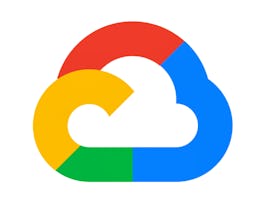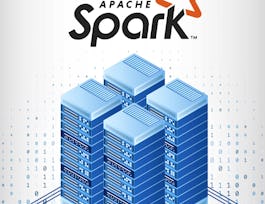This course covers BigQuery fundamentals for professionals who are familiar with SQL-based cloud data warehouses in Teradata and want to begin working in BigQuery. Through interactive lecture content and hands-on labs, you learn how to provision resources, create and share data assets, ingest data, and optimize query performance in BigQuery. Drawing upon your knowledge of Teradata, you also learn about similarities and differences between Teradata and BigQuery to help you get started with data warehouses in BigQuery.



Was Sie lernen werden
Describe BigQuery’s architecture, resource provisioning, and data definition model.
Create, secure, and share BigQuery data assets using best practices.
Implement common patterns and best practices for designing schemas, ingesting data, and querying data in BigQuery.
Compare and contrast the differences and commonalities between Teradata and BigQuery.
Wichtige Details

Zu Ihrem LinkedIn-Profil hinzufügen
6 Aufgaben
Erfahren Sie, wie Mitarbeiter führender Unternehmen gefragte Kompetenzen erwerben.


Erwerben Sie ein Karrierezertifikat.
Fügen Sie diese Qualifikation zur Ihrem LinkedIn-Profil oder Ihrem Lebenslauf hinzu.
Teilen Sie es in den sozialen Medien und in Ihrer Leistungsbeurteilung.

In diesem Kurs gibt es 6 Module
This introductory module summarizes the key details of BigQuery architecture and resource provisioning including how BigQuery utilizes slots to execute SQL queries and workload management in BigQuery. Drawing upon your knowledge of Teradata, this module also provides a high-level overview of the similarities and differences between Teradata and BigQuery architecture and resource provisioning to help you get started with BigQuery.
Das ist alles enthalten
1 Video1 Lektüre1 Aufgabe1 App-Element
This module summarizes the key details of BigQuery’s resource hierarchy and data definition model, including how to create datasets and tables in BigQuery. Drawing upon your knowledge of Teradata, this module also provides a high-level overview of the similarities and differences between the Teradata and BigQuery resource hierarchies and primary data types to help you start working with data in BigQuery.
Das ist alles enthalten
1 Lektüre1 Aufgabe
This module summarizes the key details of the Google Cloud Identity and Access Management (IAM) model, including how roles and permissions are applied to datasets and tables in BigQuery. Drawing upon your knowledge of Teradata, this module also provides a high-level overview of the similarities and differences in roles and permissions between Teradata and BigQuery to help you start securing and sharing your data in BigQuery.
Das ist alles enthalten
1 Lektüre1 Aufgabe1 App-Element
This module summarizes the primary options and best practices for ingesting data into BigQuery, including batch data loading, streaming ingestion, and queries to external data sources. Drawing upon your knowledge of Teradata, this module also provides a high-level overview of the similarities and differences in data ingestion options between Teradata and BigQuery to help you start reading and loading your data into BigQuery.
Das ist alles enthalten
1 Lektüre1 Aufgabe
This module summarizes common patterns and best practices for designing and optimizing table schemas in BigQuery, including the use of nested and repeated fields, partitioning, and clustering. Drawing upon your knowledge of Teradata, this module also provides a high-level overview of the similarities and differences in schema usage and design between Teradata and BigQuery to help you start structuring and optimizing your data in BigQuery.
Das ist alles enthalten
1 Lektüre1 Aufgabe1 App-Element
This module summarizes the key features and operations of the Google Standard SQL dialect used in BigQuery and best practices for optimizing query performance and controlling costs in BigQuery. Drawing upon your knowledge of Teradata, this module also provides a high-level overview of the similarities and differences in the SQL dialects and features between Teradata and BigQuery to help you start running and optimizing queries in BigQuery.
Das ist alles enthalten
1 Lektüre1 Aufgabe1 App-Element
Dozent

von
Empfohlen, wenn Sie sich für Cloud Computing interessieren
Warum entscheiden sich Menschen für Coursera für ihre Karriere?





Neue Karrieremöglichkeiten mit Coursera Plus
Unbegrenzter Zugang zu 10,000+ Weltklasse-Kursen, praktischen Projekten und berufsqualifizierenden Zertifikatsprogrammen - alles in Ihrem Abonnement enthalten
Bringen Sie Ihre Karriere mit einem Online-Abschluss voran.
Erwerben Sie einen Abschluss von erstklassigen Universitäten – 100 % online
Schließen Sie sich mehr als 3.400 Unternehmen in aller Welt an, die sich für Coursera for Business entschieden haben.
Schulen Sie Ihre Mitarbeiter*innen, um sich in der digitalen Wirtschaft zu behaupten.
Häufig gestellte Fragen
Access to lectures and assignments depends on your type of enrollment. If you take a course in audit mode, you will be able to see most course materials for free. To access graded assignments and to earn a Certificate, you will need to purchase the Certificate experience, during or after your audit. If you don't see the audit option:
The course may not offer an audit option. You can try a Free Trial instead, or apply for Financial Aid.
The course may offer 'Full Course, No Certificate' instead. This option lets you see all course materials, submit required assessments, and get a final grade. This also means that you will not be able to purchase a Certificate experience.
When you purchase a Certificate you get access to all course materials, including graded assignments. Upon completing the course, your electronic Certificate will be added to your Accomplishments page - from there, you can print your Certificate or add it to your LinkedIn profile. If you only want to read and view the course content, you can audit the course for free.
You will be eligible for a full refund until two weeks after your payment date, or (for courses that have just launched) until two weeks after the first session of the course begins, whichever is later. You cannot receive a refund once you’ve earned a Course Certificate, even if you complete the course within the two-week refund period. See our full refund policy.
 enthalten
enthalten




